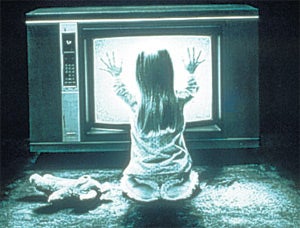Story of the Scene: Poltergeist (1982)

Your support helps us to tell the story
From reproductive rights to climate change to Big Tech, The Independent is on the ground when the story is developing. Whether it's investigating the financials of Elon Musk's pro-Trump PAC or producing our latest documentary, 'The A Word', which shines a light on the American women fighting for reproductive rights, we know how important it is to parse out the facts from the messaging.
At such a critical moment in US history, we need reporters on the ground. Your donation allows us to keep sending journalists to speak to both sides of the story.
The Independent is trusted by Americans across the entire political spectrum. And unlike many other quality news outlets, we choose not to lock Americans out of our reporting and analysis with paywalls. We believe quality journalism should be available to everyone, paid for by those who can afford it.
Your support makes all the difference.The final and cataclysmic destruction of the haunted house in Poltergeist was one of the last great model-inspired special effects before CGI became the norm. It cost well over $25,000 to make.
Poltergeist, directed by Tobe Hooper and produced by Steven Spielberg, is the story of a suburban family who buy a new home only to discover that they share it with a number of supernatural entities. The house used in the horror still stands in Simi valley, and Spielberg sent over his Industrial Light and Magic wizards to measure every inch of it for a detailed reconstruction. Even the furniture was recreated in miniature. Measuring about six-feet wide, the model was built with numerous concealed wires. Chief technician Richard Edlund and machinist Gene Whiteman then placed the house over a powerful vacuum machine and the camera was locked in place above it all. At the signal, the wires would be pulled, the house would collapse and all the debris would be sucked inside.
This black-hole effect, where all the debris vanishes into a single point, is the key aspect to this special effect. Filmed at 300 frames a second, the effect was slowed down over 15 times for the final version you see.
Though the sequence was slightly under-exposed, Spielberg was happy with the result. He had personally discovered Heather O'Rourke (above), the blonde-haired little girl who was to become the star of the film, at the cafeteria at MGM. At the same time, it was the Drew Barrymore audition for Poltergeist that had landed her the role in ET. Spielberg finally decided he needed someone a little more angelic for Poltergeist.
After the model was destroyed, its fragments were gathered up and deposited in a Perspex cube. Spielberg has kept it ever since on a grand piano in his Amblin offices.
Join our commenting forum
Join thought-provoking conversations, follow other Independent readers and see their replies
Comments